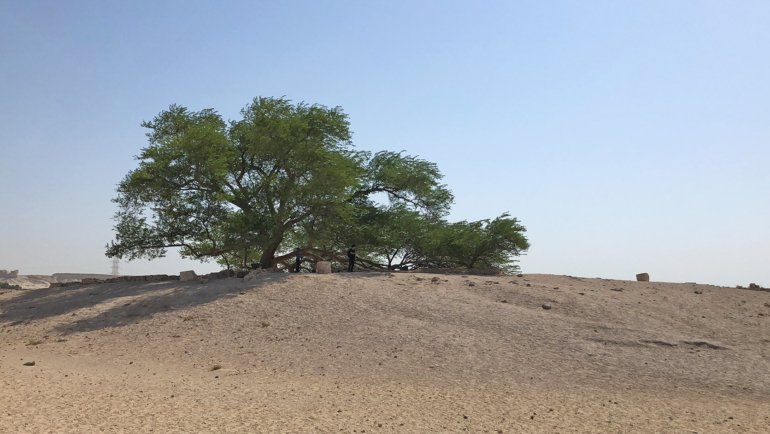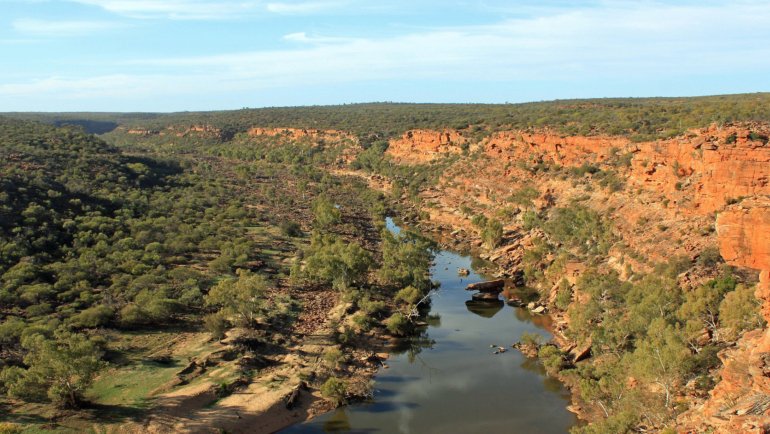Nestled on the southwestern coast of Africa, Angola has a rich cultural heritage and a tumultuous past. From the bustling streets of its capital city, Luanda, to the remote villages of its hinterland, Angola is a country full of surprises, with a unique blend of modernity and tradition.
Angola is home to a diverse range of wildlife, including several species endemic to the region. The country’s wildlife has suffered greatly due to decades of civil war and poaching, but there are ongoing efforts to protect and conserve Angola’s unique flora and fauna.
Some of the notable wildlife species found in Angola include:
1. Giant Sable Antelope
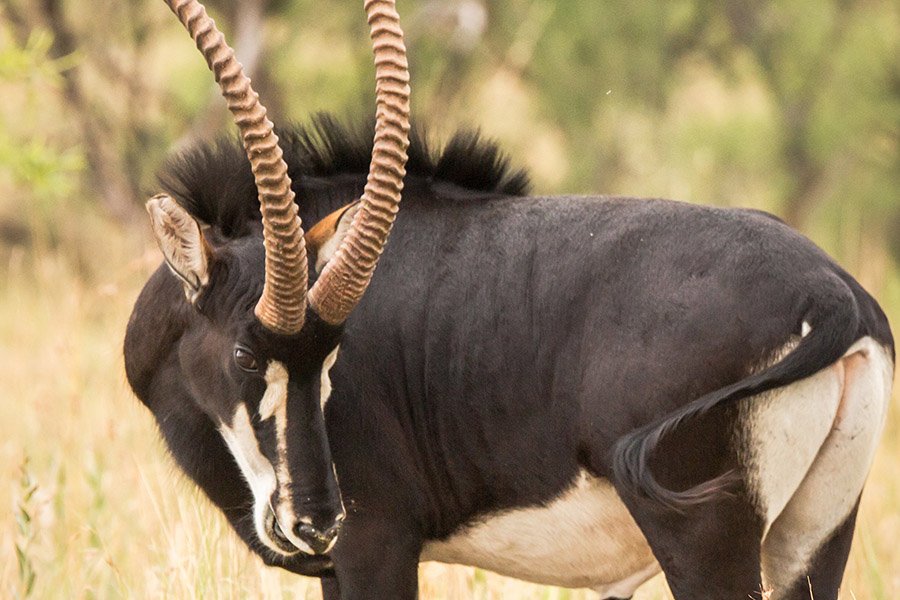
- Scientific name: Hippotragus niger variani
- Type of animal: Mammal
- Where found in the country: Luando and Cuito river basins in the provinces of Malanje and Bié
- Conservation status: Critically Endangered
Also known as the Palanca Negra, the giant sable antelope is the national animal of Angola. It’s considered a symbol of the country’s natural heritage.
It is one of the largest antelopes in Africa, with males weighing up to 300 kg (660 lb) and standing over 1.5 m (5 ft) tall at the shoulder. Females are slightly smaller, weighing around 200 kg (440 lb) and standing up to 1.3 m (4 ft) tall.
★ Did you know? The giant sable antelope was thought to be extinct for over a decade. After the end of the Angolan Civil War in 2002, a team of researchers conducted a survey of the animal’s habitat and found a small population of fewer than 100 individuals.
2. Chacma Baboon
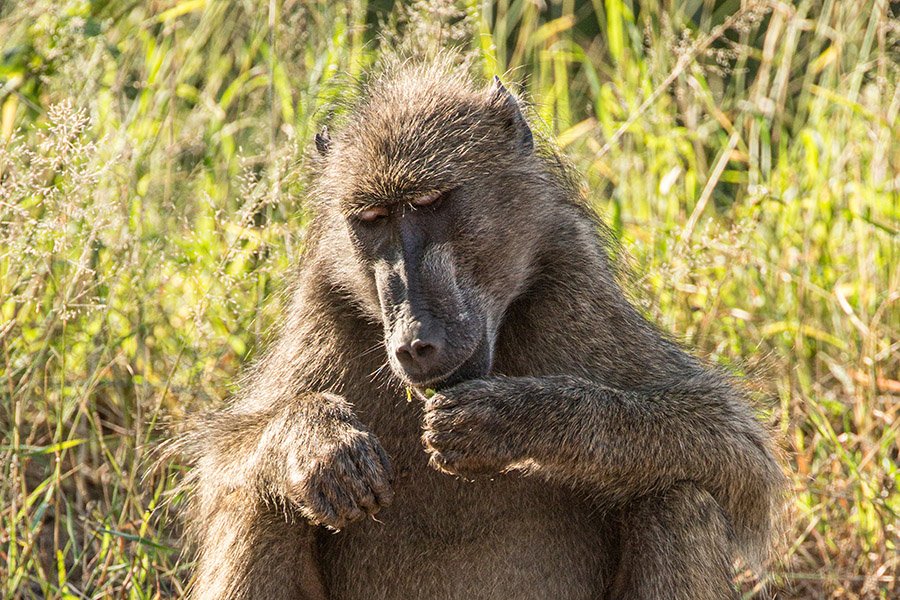
- Scientific name: Papio ursinus
- Type of animal: Mammal
- Where found in the country: Provinces of Cuando Cubango, Cunene, and Moxico
- Conservation status: Least Concern
Chacma baboons are among the most widely distributed baboon species found in various habitats, including savannas, woodlands, and forests.
In Angola, Chacma baboons are found in the southern and eastern regions of the country, particularly in the provinces of Cuando Cubango, Cunene, and Moxico. These areas are characterized by a mix of woodland, savanna, and grassland habitats, which provide the baboons with various food sources, such as fruits, seeds, and insects.
★ Did you know? Chacma Baboons are known for their unique behavior of using tools. Studies have shown that Chacma Baboons in some populations use rocks to crack open hard-shelled nuts and dig for roots and tubers. They will sometimes even carry their favorite rocks from one feeding site to another.
3. Red-tailed Monkey

- Scientific name: Cercopithecus ascanius
- Type of animal: Mammal
- Where found in the country: Maiombe forest in the northwestern part of the country, as well as in the Cabinda and Lunda Norte provinces in the east
- Conservation status: Least Concern
The red-tailed monkey is a small arboreal primate native to the rainforests and woodlands of central and eastern Africa, including Angola. These monkeys are characterized by their striking appearance, which includes a red tail and white underside, contrasting with the dark gray or black fur on their back, limbs, and face.
Despite being widespread, red-tailed monkeys are considered to be threatened by habitat loss and fragmentation, as well as hunting for bushmeat and the pet trade. Conservation efforts are being made to protect their habitats and reduce the impact of these threats.
★ Did you know? Red-tailed monkeys have been observed engaging in a behavior known as “ant dipping.” This involves using a small stick or twig to collect ants or termites from their nests and then licking the insects off the stick.
4. Plains Zebra
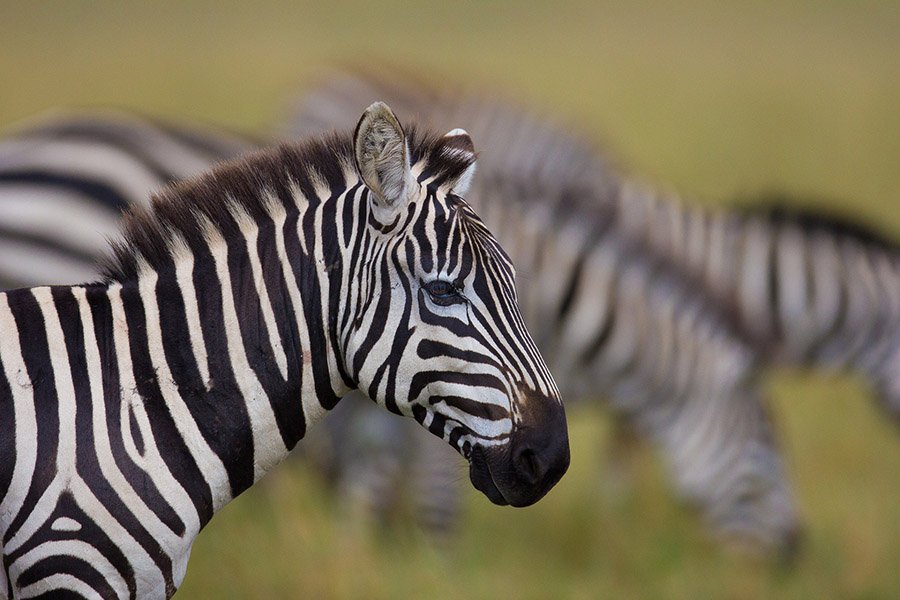
- Scientific name: Equus quagga
- Type of animal: Mammal
- Where found in the country: Treeless grasslands and savanna woodlands
- Conservation status: Near Threatened
Plains zebra is by far the less common type of zebra in Angola. It’s a species of African equid well known for its striking black-and-white striped coat. They are native to the grassy savannas and woodlands of eastern and southern Africa, where they graze on grasses and other vegetation.
Plains zebras are social animals and typically live in herds ranging from a few individuals to hundreds. Within these herds is a dominant stallion who mates with the females and can give birth to a single foal after a gestation period of around 12 months.
★ Did you know? Plain zebras have stripes that are unique to each individual, much like a human fingerprint. While all plains zebras have the same basic pattern of black and white stripes, the stripes’ width, number, and placement can vary between individuals. Researchers and conservationists can use stripe patterns to identify and track individual zebras in the wild.
5. African Leopard
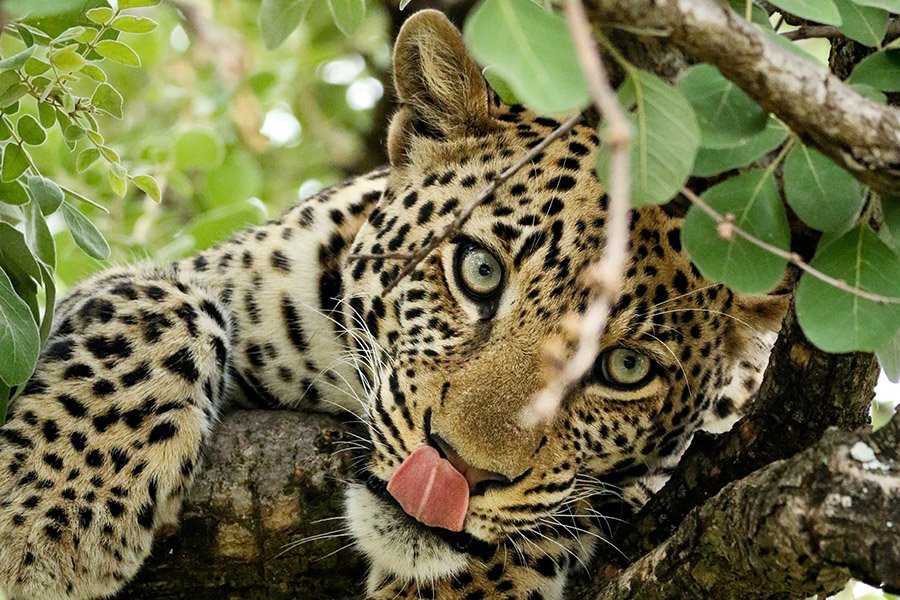
- Scientific name: Panthera pardus pardus
- Type of animal: Mammal
- Where found in the country: Angola’s forested regions, particularly in the miombo woodlands and the Congo Basin forests in the northern and eastern parts of the country
- Conservation status: Least Concern
African leopards are a species of large cats found throughout much of Africa, including Angola. They are solitary and elusive animals known for their remarkable hunting skills, agility, and strength.
They are highly adaptable and can live in various habitats, including forests, grasslands, and mountainous regions. They are opportunistic hunters and will prey on many animals, from small rodents and birds to large ungulates such as antelopes and gazelles.
★ Did you know? African leopards are incredibly strong and agile animals, capable of dragging prey twice their own weight up a tree to keep it away from other predators.
6. Olive Marsh Snake
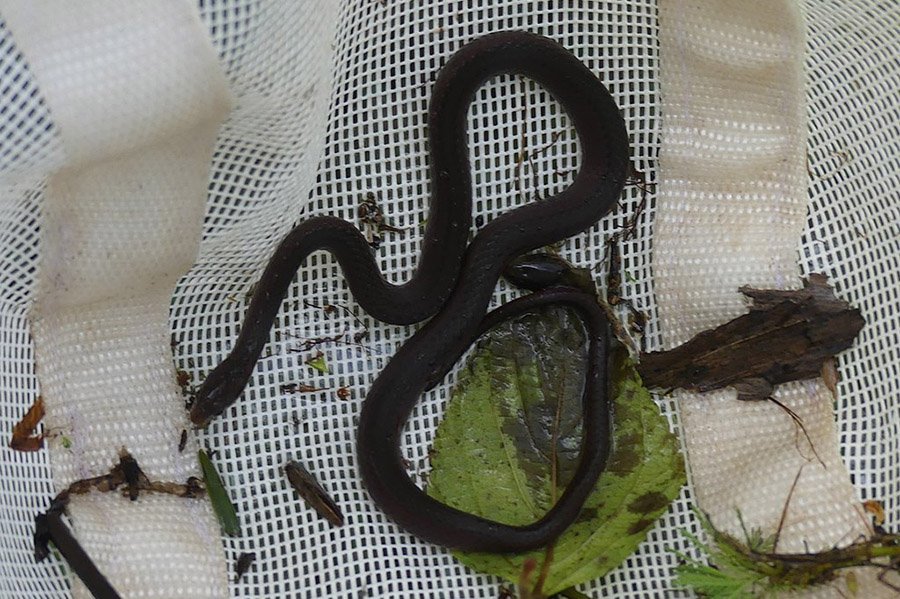
- Scientific name: Natriciteres olivacea
- Type of animal: Reptile
- Where found in the country: Marshy areas, wetlands, and other humid habitats, such as swamps and rice paddies
- Conservation status: Least Concern
The olive marsh snake is a non-venomous snake species found in sub-Saharan Africa, including Angola. It is a small, slender snake that typically grows between 20-40 cm (8-16 inches) in length, although some individuals may reach up to 60 cm (24 inches).
Olive marsh snakes are typically brown or olive-green, with slightly darker heads and narrow bodies. They have small eyes and smooth scales and are well-adapted to life in humid, marshy environments. They are nocturnal and feed on small amphibians, fish, and invertebrates.
★ Did you know? Olive marsh snakes have a unique reproductive strategy that involves producing relatively large eggs rather than giving birth to live young like many other snake species.
7. Greater Flamingo

- Scientific name: Phoenicopterus roseu
- Type of animal: Bird
- Where found in the country: Coastal areas, including the Benguela, Namibe, and Zaire provinces. They also occur in Kissama National Park.
- Conservation status: Least Concern
Greater flamingoes are highly social birds and are often observed in large flocks. Their long, thin legs and curved bills are well-adapted to their feeding habits in shallow waters. The pigments cause their distinctive pink coloration in the algae and crustaceans they consume.
Despite being a widespread species, they are still considered a remarkable sight and a symbol of the beauty and diversity of Angola’s natural environment.
★ Did you know? Greater flamingos’ beaks are specially designed to separate mud and silt from the water, leaving only clean water to be consumed. This adaptation also allows them to feed on algae, plankton, and brine shrimp in highly saline lakes and lagoons.
8. Bryde’s Whale
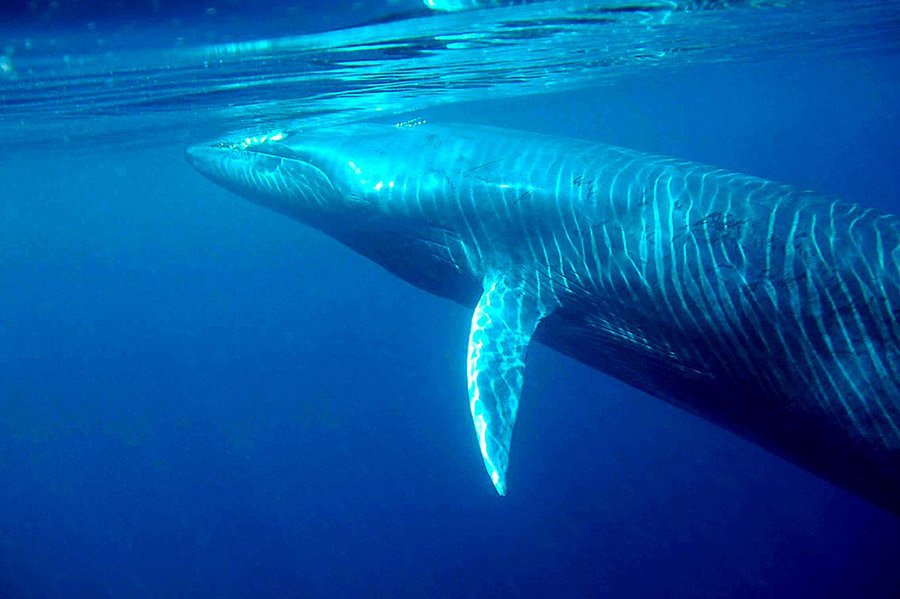
- Scientific name: Balaenoptera brydei
- Type of animal: Mammal
- Where found in the country: Waters off the coast of Angola
- Conservation status: Least Concern
Bryde’s whale, also known as the “tropical whale,” is a baleen whale belonging to the family Balaenopteridae. They are found in warm, tropical, and subtropical waters worldwide, including the Atlantic, Indian, and Pacific Oceans.
Bryde’s whales are relatively small compared to other baleen whales, with adults reaching lengths of around 12-15 meters (39-49 feet) and weighing up to 20-30 tons. They have a dark gray or blue-black body color, with three longitudinal ridges running along the top of the head.
★ Did you know? Bryde’s whales are known to engage in cooperative feeding behaviors.
Sometimes, groups of Bryde’s whales work together to create a “bubble net” to trap their prey. They swim in a circle while blowing bubbles, which creates a wall of bubbles that encircles their prey.
9. Spotted Hyena
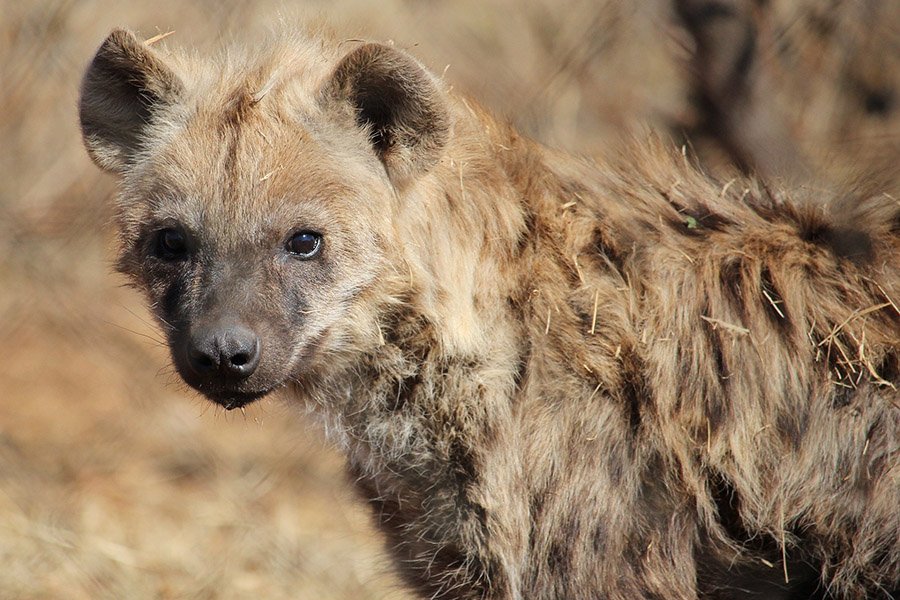
- Scientific name: Crocuta crocuta
- Type of animal: Mammal
- Where found in the country: Savannas and woodlands of the southern and eastern regions of the country
- Conservation status: Least Concern
Spotted hyenas are large carnivorous mammals that belong to the family Hyaenidae. They are known for their distinctive spotted coat pattern, a mix of brown, black, and white spots on a sandy or grayish-brown background.
Spotted hyenas are widely distributed across sub-Saharan Africa and are known for their adaptability to habitats, from open grasslands and woodlands to semi-arid areas and mountainous regions.
★ Did you know? Spotted hyenas have a bite force of around 1,100 PSI, stronger than the bite force of lions, their close competitors for prey on the African savanna. This powerful bite force allows hyenas to crush and consume bones, an important calcium source in their diet.
10. Bat-eared Fox
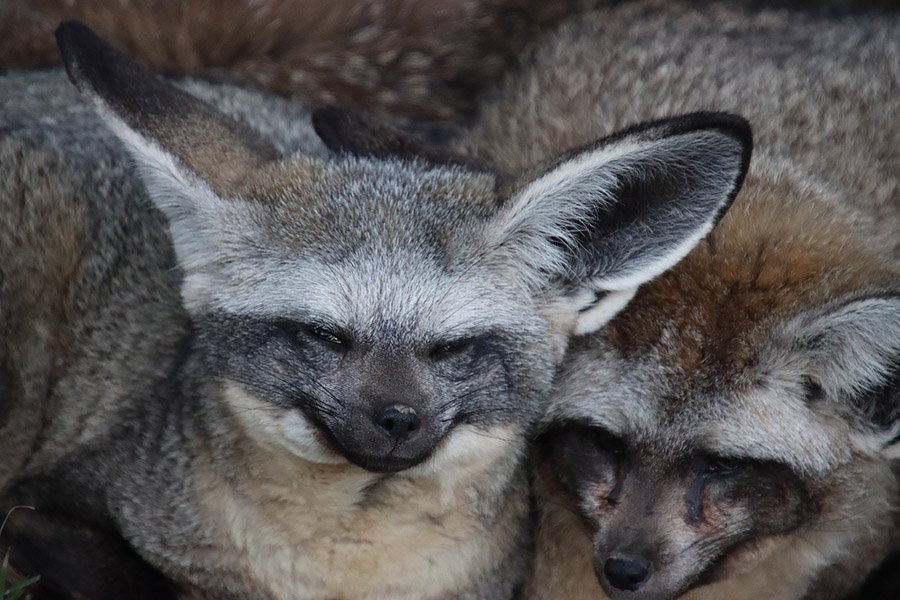
- Scientific name: Otocyon megalotis
- Type of animal: Mammal
- Where found in the country: Short-grass prairies and arid grasslands
- Conservation status: Least Concern
The bat-eared fox is a small, desert-dwelling fox species found in parts of Africa. It is the only surviving member of the genus Otocyon and is considered to be a primitive species of canid. Fossil evidence suggests that this canid species first appeared during the middle Pleistocene period.
It is named for its large, bat-like ears, which it uses for thermoregulation and to detect prey. The bat in its name may be a reference to the Egyptian slit-faced bat, which is abundant in the region and has similarly large ears. Other common names for this species include big-eared fox, black-eared fox, long-eared fox, Delalande’s fox, cape fox, and motlosi, though these are less commonly used.
★ Did you know? Bat-eared foxes have an extremely specialized diet, feeding primarily on insects such as termites and ants. In fact, up to 80% of their diet may consist of termites alone!
11. African Bush Elephant
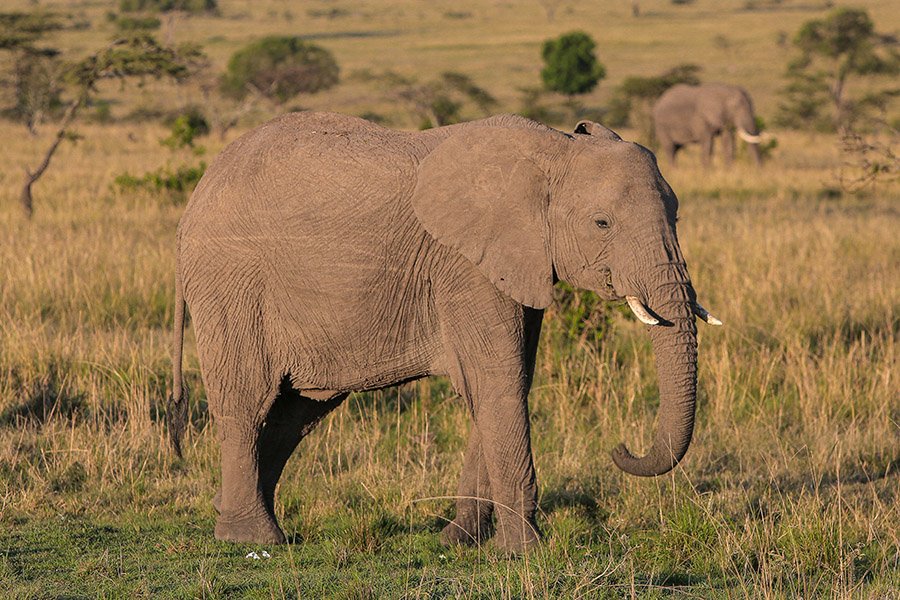
- Scientific name: Loxodonta africana
- Type of animal: Mammal
- Where found in the country: Protected areas such as Bicuar National Park and Mavinga National Reserve, which have been established to conserve wildlife and biodiversity in Angola.
- Conservation status: Endangered
The African bush elephant (Loxodonta africana), also known as the African savanna elephant, holds the distinction of being a massive land animal, with males reaching a shoulder height of up to 3.96 m (13 ft 0 in) and a weight of up to 10.4 t (11.5 short tons).
This species is distributed across 37 African countries and can be found in various habitats, including forests, grasslands, woodlands, wetlands, and agricultural land. They are social mammals that travel in herds of females and their offspring. Adult males usually live alone or in small bachelor groups.
★ Did you know? African bush elephants have an amazing memory and can recognize and remember hundreds of different individuals, even after long periods. This highlights their intelligence and sophisticated social behavior.
12. Kori Bustard
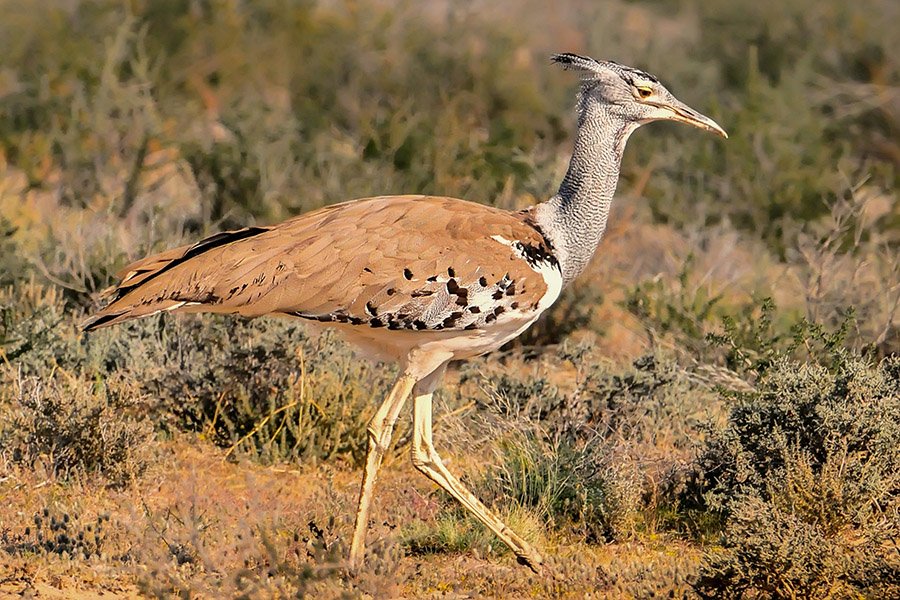
- Scientific name: Ardeotis kori
- Type of animal: Bird
- Where found in the country: Southern regions, such as the Cunene and Cuando Cubango provinces
- Conservation status: Near Threatened
The kori bustard is a member of the bustard family, exclusive to the Old World, and belongs to the Otidiformes order. It is the largest flying bird indigenous to Africa and is one of four species within the Ardeotis genus, including large-bodied birds ranging from Africa to India to Australia. The male kori bustard, in particular, may be the heaviest living animal capable of flying.
Like most bustards, this species is primarily a ground-dwelling bird with an omnivorous diet. The male kori bustard, which can be more than twice the weight of the female, seeks to mate with as many females as possible and does not assist in raising the young. The nest is a shallow indentation on the ground, which is often camouflaged by nearby obstructions like trees.
★ Did you know? Kori bustards hold the record for the heaviest birds capable of flight, with males weighing up to 18 kilograms (40 pounds). Despite their large size, they can take off and fly when threatened or during mating displays.
